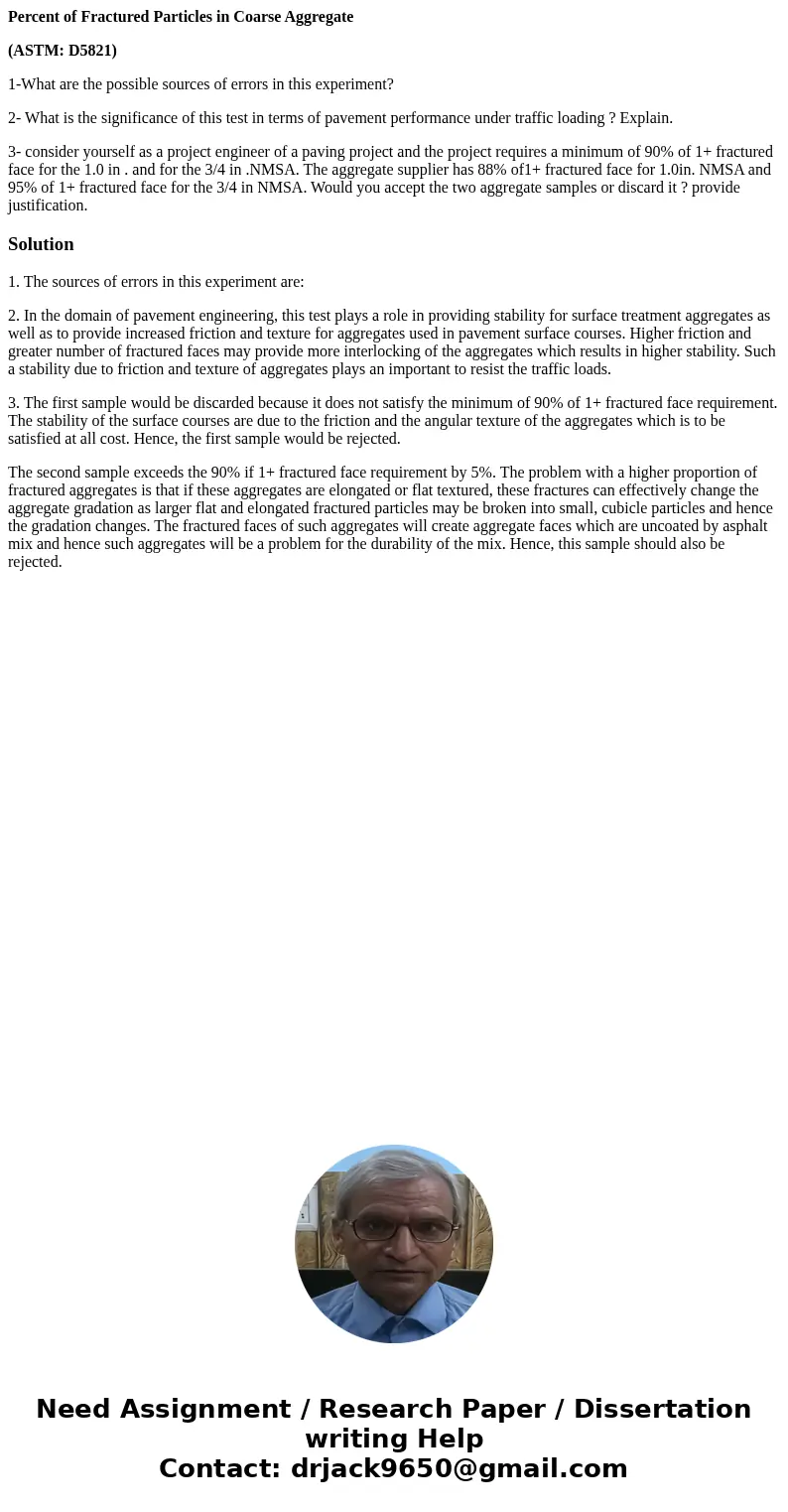Percent of Fractured Particles in Coarse Aggregate ASTM D582
Percent of Fractured Particles in Coarse Aggregate
(ASTM: D5821)
1-What are the possible sources of errors in this experiment?
2- What is the significance of this test in terms of pavement performance under traffic loading ? Explain.
3- consider yourself as a project engineer of a paving project and the project requires a minimum of 90% of 1+ fractured face for the 1.0 in . and for the 3/4 in .NMSA. The aggregate supplier has 88% of1+ fractured face for 1.0in. NMSA and 95% of 1+ fractured face for the 3/4 in NMSA. Would you accept the two aggregate samples or discard it ? provide justification.
Solution
1. The sources of errors in this experiment are:
2. In the domain of pavement engineering, this test plays a role in providing stability for surface treatment aggregates as well as to provide increased friction and texture for aggregates used in pavement surface courses. Higher friction and greater number of fractured faces may provide more interlocking of the aggregates which results in higher stability. Such a stability due to friction and texture of aggregates plays an important to resist the traffic loads.
3. The first sample would be discarded because it does not satisfy the minimum of 90% of 1+ fractured face requirement. The stability of the surface courses are due to the friction and the angular texture of the aggregates which is to be satisfied at all cost. Hence, the first sample would be rejected.
The second sample exceeds the 90% if 1+ fractured face requirement by 5%. The problem with a higher proportion of fractured aggregates is that if these aggregates are elongated or flat textured, these fractures can effectively change the aggregate gradation as larger flat and elongated fractured particles may be broken into small, cubicle particles and hence the gradation changes. The fractured faces of such aggregates will create aggregate faces which are uncoated by asphalt mix and hence such aggregates will be a problem for the durability of the mix. Hence, this sample should also be rejected.

 Homework Sourse
Homework Sourse